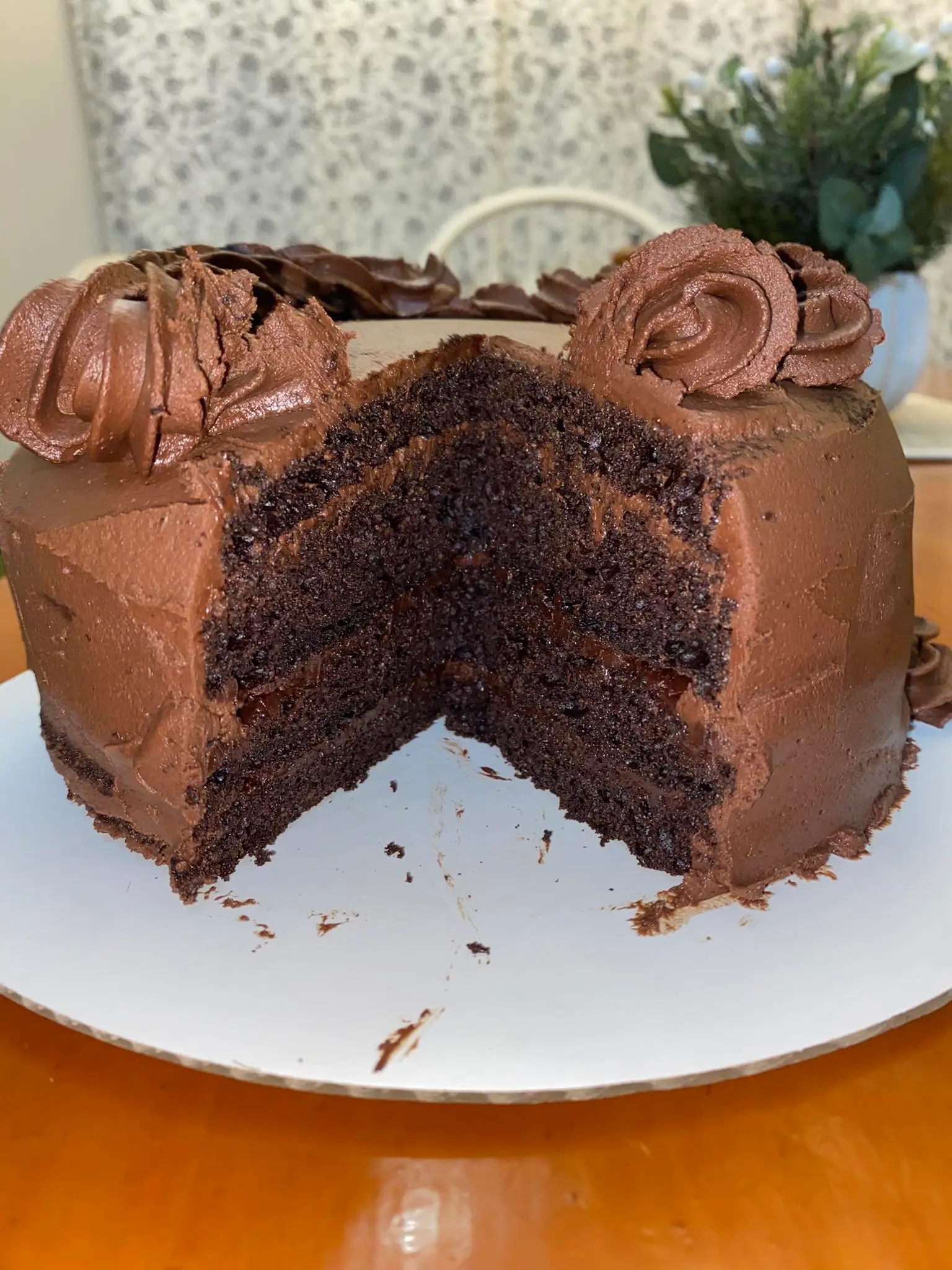That sounds like an amazing journey into the world of baking and cake decorating! Achieving a moist, velvety cake requires a combination of the right ingredients, techniques, and baking practices. Below, I’m sharing a detailed recipe for an ultra-moist vanilla cake with an introduction, history, ingredient breakdown, step-by-step method, and tips to ensure it turns out perfect every time.
The Ultimate Moist and Velvety Vanilla Cake
Introduction
A cake is not just a dessert; it’s an experience, a celebration, and a symbol of love and joy. Whether it’s a birthday, a wedding, or just a simple gathering, a well-made cake can elevate the moment. But what separates a good cake from a truly exceptional one? Moisture and texture.
This recipe ensures a soft, velvety crumb with rich vanilla flavor, enhanced by the right balance of fats, sugars, and hydration. We will explore the science behind moisture retention, the importance of proper mixing techniques, and how to avoid common pitfalls that lead to dryness.
A Brief History of Cakes
Cakes have evolved significantly from ancient times. The earliest cakes were more like sweetened bread, often made with honey and nuts by the Egyptians. Over time, with the invention of refined sugar and the introduction of baking powder in the 19th century, cakes transformed into the fluffy, tender treats we enjoy today.
Ingredients (for two 9-inch layers or a 3-layer 8-inch cake)
For the Cake:
- 2 ½ cups (310g) cake flour (for a finer texture)
- 2 ½ tsp baking powder (leavening agent)
- ½ tsp baking soda (adds a light texture)
- ½ tsp salt (enhances flavor)
- 1 cup (226g) unsalted butter, room temperature (adds richness)
- 1 ¾ cups (350g) granulated sugar (sweetness and moisture retention)
- 4 large eggs, room temperature (structure and richness)
- 2 ½ tsp pure vanilla extract (deep vanilla flavor)
- ¾ cup (180ml) buttermilk, room temperature (acidity for tenderness)
- ½ cup (120ml) sour cream, room temperature (moisture and texture)
- ½ cup (120ml) vegetable oil (locks in moisture)
For the Vanilla Buttercream Frosting:
- 1 ½ cups (340g) unsalted butter, room temperature
- 4 cups (480g) powdered sugar
- 2 tsp pure vanilla extract
- ¼ cup (60ml) heavy cream
Step-by-Step Instructions
1. Preparation & Mixing
- Preheat the oven to 350°F (175°C). Grease and line two 9-inch cake pans with parchment paper.
- Sift together the dry ingredients: In a medium bowl, whisk together the cake flour, baking powder, baking soda, and salt. Set aside.
- Cream the butter and sugar: In a large mixing bowl, beat the butter and sugar together on medium speed for 3-4 minutes until light and fluffy. This step is crucial for incorporating air into the batter.
2. Incorporating the Wet Ingredients
- Add eggs one at a time: Beat in the eggs one at a time, ensuring each is fully incorporated before adding the next. Scrape the sides of the bowl as needed.
- Mix in the vanilla extract for that deep, aromatic flavor.
- Alternate adding the dry ingredients and liquids:
- Start by adding ⅓ of the dry ingredients and mix on low.
- Then add ½ of the buttermilk and sour cream mixture, mixing gently.
- Repeat until all ingredients are incorporated, ending with the dry ingredients.
- Do not overmix—stop as soon as everything is combined.
3. Baking & Cooling
- Pour the batter evenly into the prepared cake pans and smooth the tops with a spatula.
- Bake for 28-32 minutes or until a toothpick inserted in the center comes out with a few moist crumbs.
- Let the cakes cool in the pans for 10 minutes, then transfer them to a wire rack to cool completely before frosting.
Vanilla Buttercream Frosting
- Beat the butter on medium-high speed until creamy (about 2 minutes).
- Gradually add powdered sugar, beating well between each addition.
- Add vanilla and heavy cream and beat for 2-3 minutes until smooth and fluffy.
Assembly & Decoration
- Level the cake layers if necessary by trimming the domed tops with a serrated knife.
- Spread a generous layer of buttercream between each layer.
- Frost the exterior with a crumb coat (thin layer), then apply a final smooth coat.
- Decorate as desired with sprinkles, flowers, or piping designs.
Tips for the Moistest Cake
- Use cake flour instead of all-purpose flour for a softer crumb.
- Do not overmix the batter; it can lead to a dense texture.
- Use room temperature ingredients for even mixing.
- Do not overbake. A slightly underbaked cake retains more moisture.
- Wrap the cake layers in plastic wrap while warm to trap steam and keep them moist.
Why This Cake is Loved by All
This cake is cherished for its perfect balance of rich butteriness and light, fluffy texture. The combination of buttermilk, sour cream, and oil creates a cake that stays moist for days, making it ideal for celebrations. The vanilla buttercream adds a creamy, luxurious touch that pairs beautifully with any filling or topping.
Conclusion
Mastering the perfect cake is a blend of science and artistry. By following this recipe and understanding the role of each ingredient, you can create a truly memorable dessert. Whether it’s for a special occasion or just because, this cake is sure to impress everyone who takes a bite.
Would you like tips on variations, such as adding fruit, chocolate, or caramel layers? Let me know how you want to personalize it! Happy baking!
